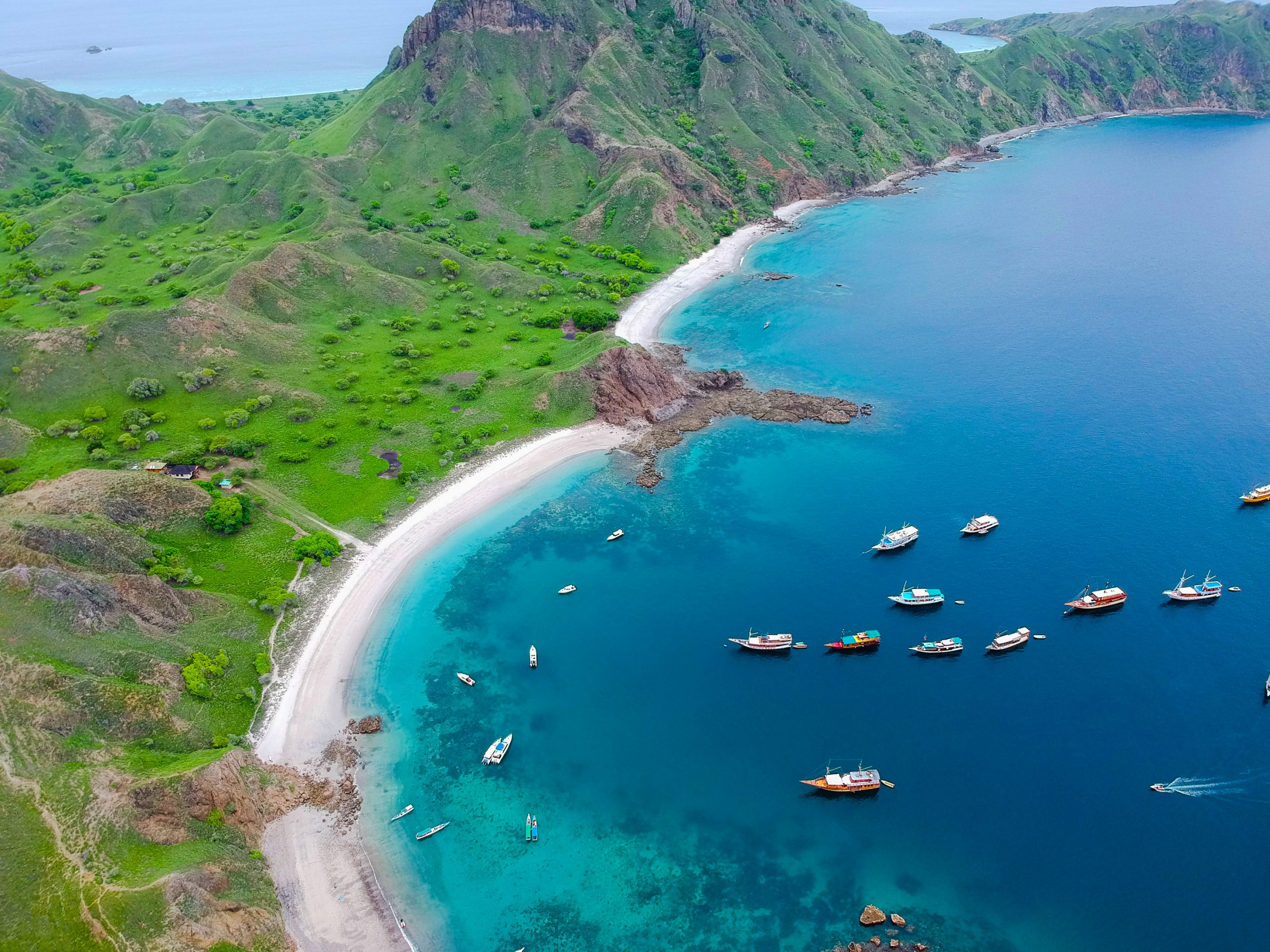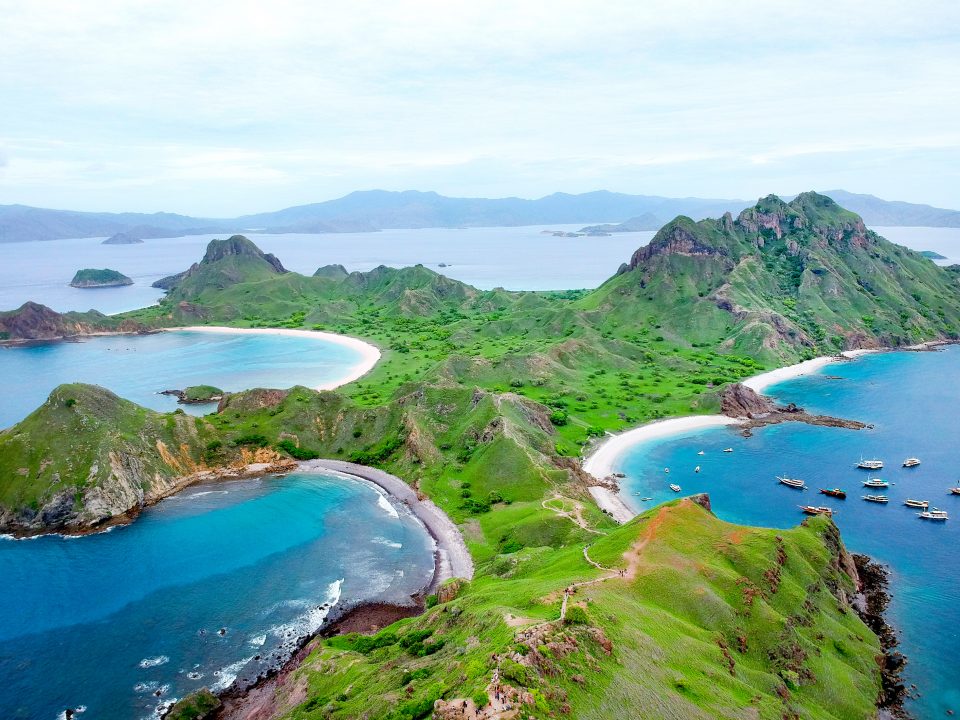After surviving 10-15 minutes of high waves in the strait between Rinca and Padar islands, we reached one of the turquoise-bays at the latter.
Phion, my guide, and our captain assured us that choppy waters are a common experience in that narrow passage and there was nothing to worry about, as our journey begins in Komodo Island Park.
Nonetheless, watching our breakfast dishes sliding down the low wooden table gave me goosebumps. The boats a few metres in front of us also had their bows and sterns see-sawing between humongous waves. The most prized natural views are usually not easily grabbed but are earned after varying degrees of effort, hard work, and adventure.
The Komodo National Park
in the province of East Nusa Tenggara has been popular with many world tourists who seek adventure both on land and sea. The park has some unique features to offer, including the largest living lizards, the Komodo dragons, that can only be found here. When you consider the park as a whole, with its nearly 30 islands, it is definitely the seascape and the beaches that keep dominating your senses with their hues and contours.
The most scenic part here is Padar island; a series of rolling hills with differently shaped peaks and sloping savannas from east to west. When viewed from above, the island is a complicated rock formation, volcanic and evoking prehistoric thoughts and beauty that surpass imaginations of an idyllic haven. It has forked arms and legs, curvy wedges and arches, precipitous capes and peaks, all imperfectly chiselled; the result of some big break up that might have occurred aeons ago.
There hides a surreal formation in that imperfection: the island’s western edge, slimmer and shapelier in comparison to the banal eastern end. Yes, you have to climb one of the peaks in order to scan that outline of the island that is the most sought-after charm. From the comfort of your boat cabin, the island is just another hilly structure that can be seen all around the national park.
We registered at the national park office with a number of other tourists – far fewer than usual due to COVID-19 induced conditions. Travellers either aim to get here for the sunrise or the sunset view. Mid-day sun on Padar can be mercilessly hot, especially during the high season in June-October. The number of boats arriving here for the sunrise can be anywhere between 50 and 100, however, 15 boats this time meant smoother processing and a faster climb to the top.
The good thing – or, not really good for the adventure-hungry – is that steps are provided all the way to the top of the southwestern peak. The last leg, where the end of the step, can be a bit rocky, with a 45-degree inclination, but should pose no big challenges to anyone above 10 years old.
After 40 minutes of hiking, which can be done in 25-30 without taking breaks, we reached the peak and gazed toward the west that provides one of the most stunningly entrancing landscape views you can savour anywhere in the world. The hills that brandish themselves like giant claws of prehistoric beasts, the arches of beaches that showcase multiple hues of sands – white, black, and pink – appear before you as a 3D picture. Your eyes turn from left to right, top to bottom, and process a 360-degree panorama that cannot be recreated effectively by any app. If there is one place where a white sand beach plays second fiddle, it is at Padar island. The pink beach is the chief guest here. The black sand beach is hardly accessed by people, but the presence of a third colour adds to the phenomenon of the geographical aspect of the island.
Most of Padar island is formed purely of slender hills that rise and fall from one end to another. These hills are barren and look terrifyingly brownish during the dry season, but don a lovable greenery when rainfall starts sometime in late November or December. The hills hold savannas with no trees anywhere to provide shade for travellers. The island is uninhabited, although the biggest wildlife attraction in the park, the Komodo dragons, once used to roam the hills. Following food scarcity, the authorities decided to move them to their native Komodo island in the west.
We descended down the stairs, consuming the last bits of an addictive beauty. Our boat then made a roundabout cruise along the island’s surrounding waters to take us to the long pink beach on the western side, facing Komodo island. The Komodo National Park has several pink sand beaches of which the one on Padar is oft-visited. There are red microscopic organisms called Foraminifera that leave red or pink pigments on coral reefs. Once parts of the reefs break up and get pulverised, they fall to the ocean floor and subsequently end up mixing with the white sand. The combination of the red powdered bits of the reefs and the white sand conjure up an eye-catching metamorphosis, resulting in a pink sand beach.




